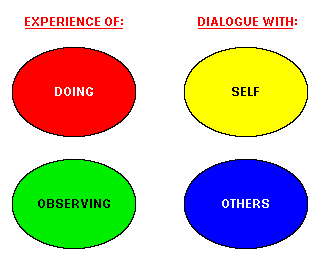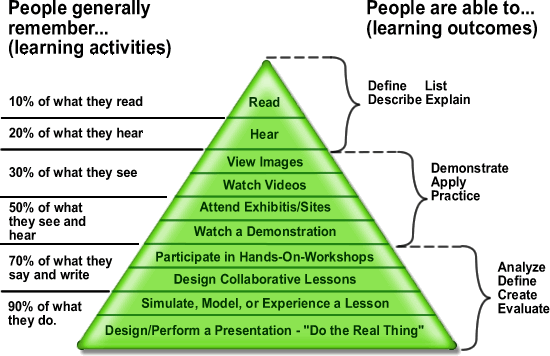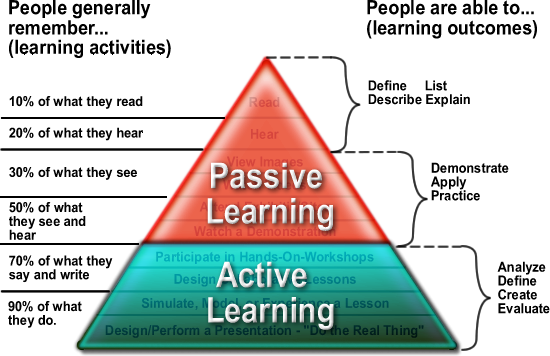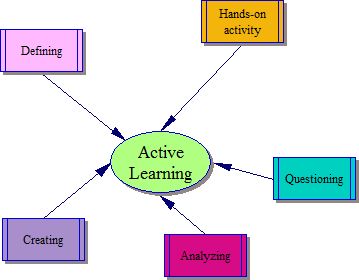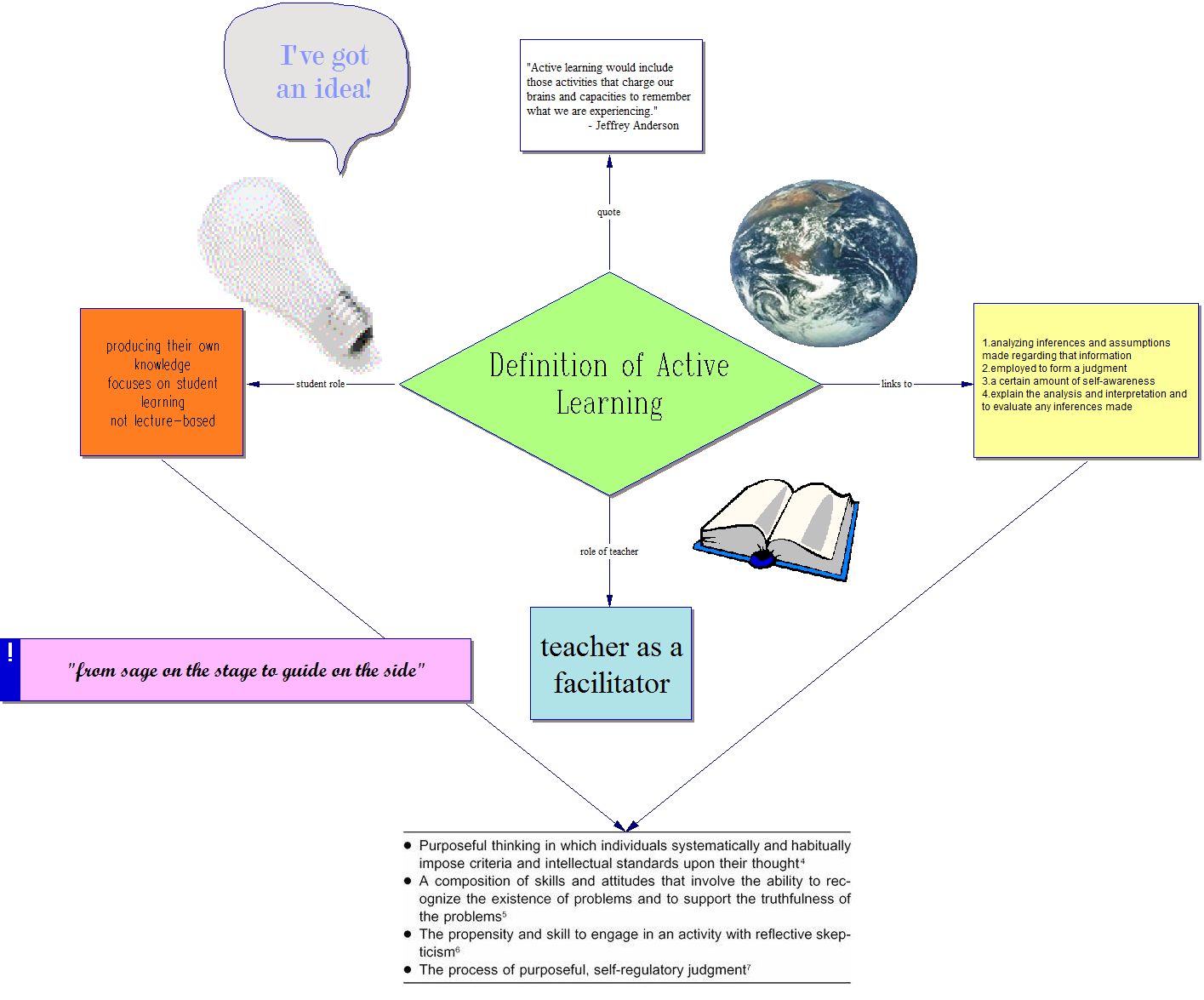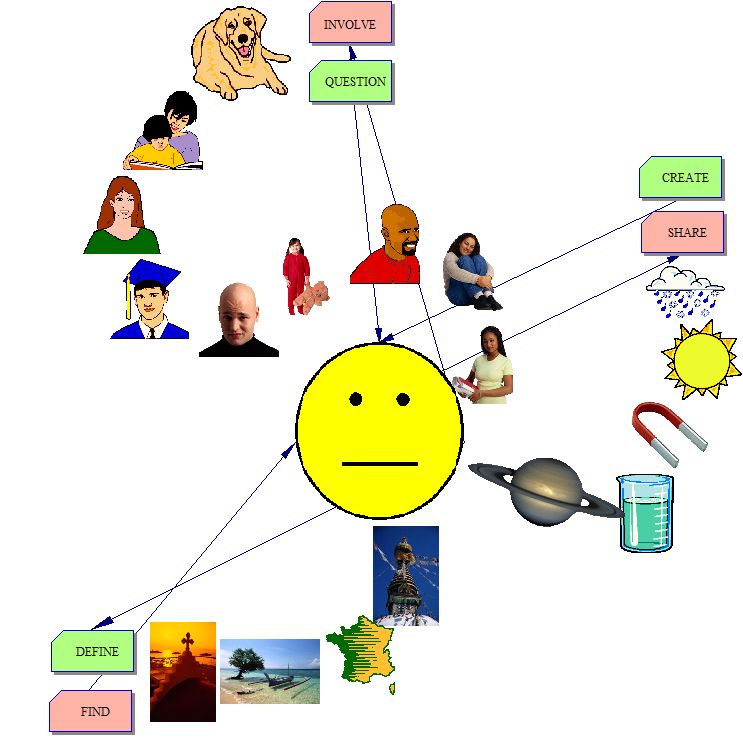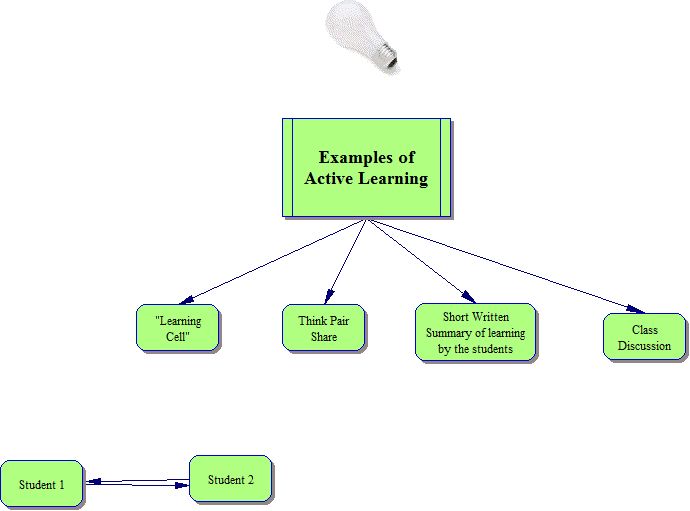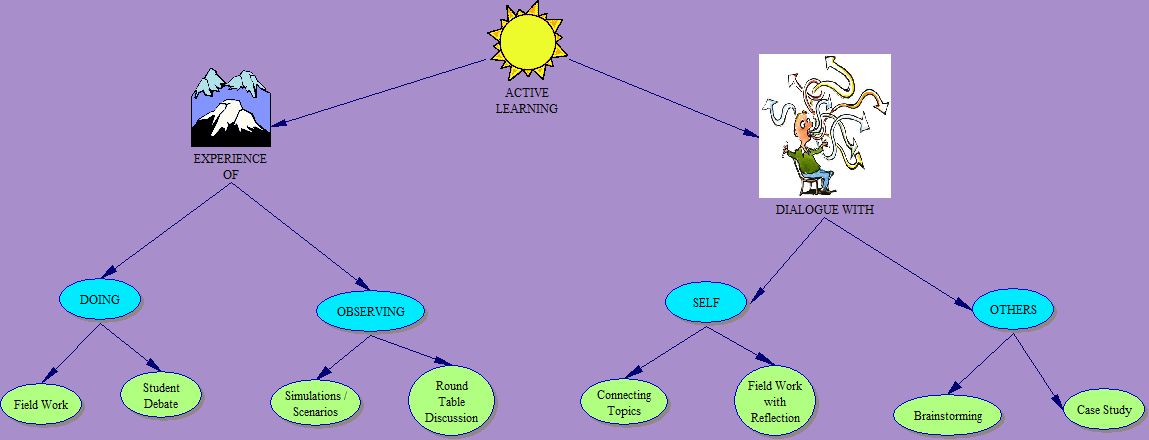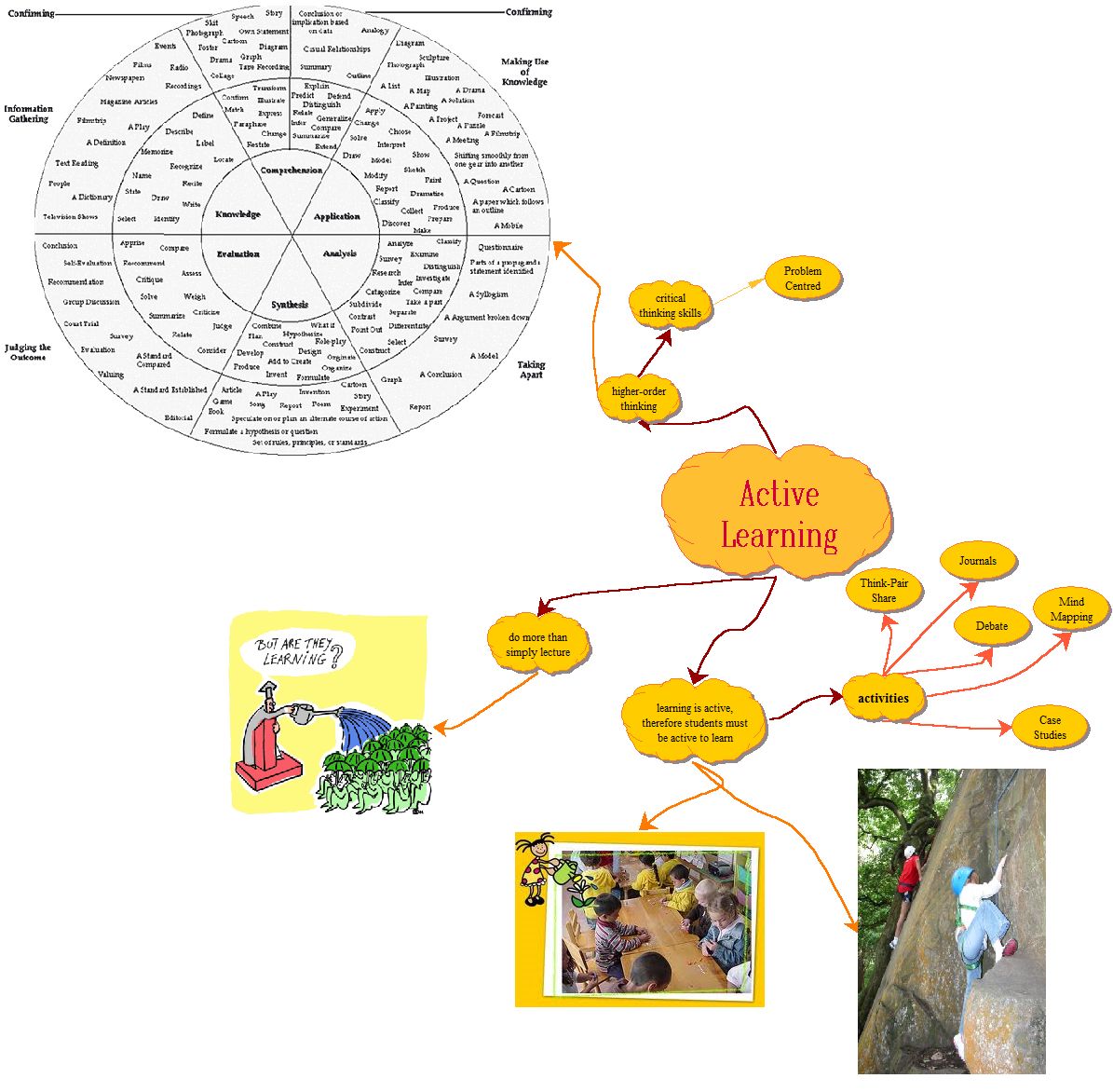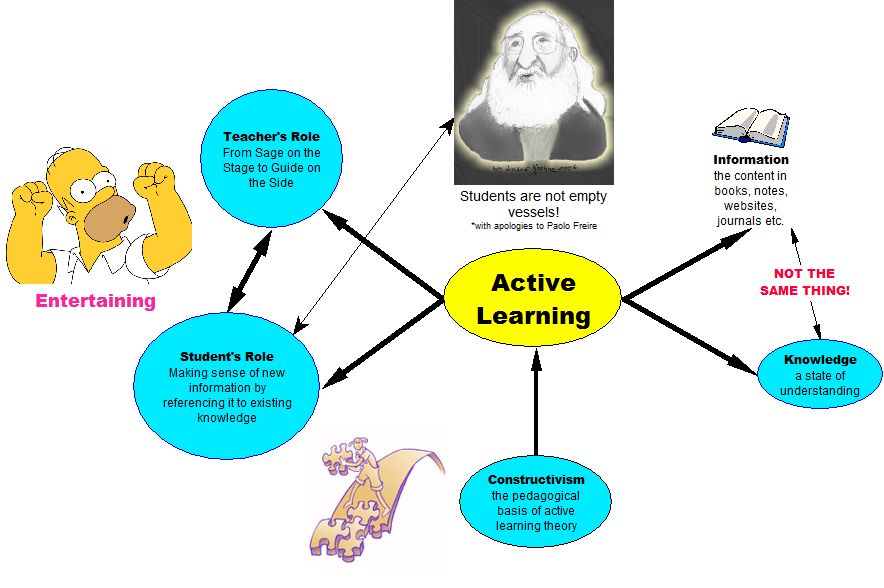Course:EDCP371 951 2010/Active learning
“Intelligence is distinct.” Sir Ken Robinson’s talk on “Do schools kill creativity?” examines the structure of education where for the most part, we are grooming students to achieve and perform in an academic stream. However, this is a method where we might lose the interests of other highly capable students who succeed in many areas but require a different method of learning. Creativity, which is also an important component in education is often not stressed. Active learning where the learning is not passive and is the responsibility of the learner can also produce highly successful individuals. Intelligence is distinct for each individual and active learning can help tap into this intelligence.
(http://www.paddlinginstructor.com/images/stories/resource_articles/active_learning_4circles .gif)
Active learning involves more than a development of the individual but also an involvement in the classroom ecology of learning. The interactions within oneself is as important as the interactions with environment and other entities within the classroom including teacher and student. Also, traditional education has encouraged observation but not a lot of activity. Active learning promotes a hand-on and design method of learning that proves to be more fulfilling than traditional methods.
Definition of Active Learning
Active learning is characterized by its high level of student engagement in classroom activities that involve the students to execute tasks intellectually and physically. According to Jeffrey Anderson ([[1]]), "Active learning would include those activities that charge our brains and capacities to remember what we are experiencing." These experiences that students are having increase what they are learning and puts the focus more on learning rather than learning. The teacher is not the transmitter or information but rather the facilitator for the teacher to produce their own knowledge.
Active learning has been linked with critical thinking by Stacy E. Walker, National Athletic Training Association (J Athl Train. 2003 Jul-Sep; 38(3): 263-267.)
"Four commonly referenced definitions of critical thinking are provided in Table 1. All of these definitions describe an individual who is actively engaged in the thought process. Not only is this person evaluating, analyzing, and interpreting the information, he or she is also analyzing inferences and assumptions made regarding that information. The use of CT skills such as analysis of inferences and assumptions shows involvement in the CT process. These cognitive skills are employed to form a judgment. Reflective thinking, defined by Dewey8 as the type of thinking that consists of turning a subject over in the mind and giving it serious and consecutive consideration, can be used to evaluate the quality of judgment(s) made.9 Unfortunately, not everyone uses CT when solving problems. Therefore, in order to think critically, there must be a certain amount of self-awareness and other characteristics present to enable a person to explain the analysis and interpretation and to evaluate any inferences made."
(http://www.edutechie.ws/2007/10/09/cone-of-experience-media/)
Active learning can be compared to the Bloom's Taxonomy hierarchy. Different levels of active engagement with a subject enables a student to retain a certain amount of knowledge and skill.
(http://www.edutechie.ws/2007/10/09/cone-of-experience-media/)
Active Learning Approaches:
Round table discussion: A discussion which may follow any number of specific protocols, but that is based on the agreement that each person has equal opportunity to contribute and equal status in the discussion.
Connecting a topic Pointing out similarities between the topic to be studied and one that is more contemporary, more familiar, or more interesting to your students.
Brainstorming : A method of collaborative problem solving in which all members of a group spontaneously contribute ideas, or a similar process undertaken by an individual to solve a problem by rapidly generating and recording a variety of possible solutions.
Case study, mini-case study: An analysis of a particular case or situation, either real or constructed, that is used as a basis for the application of knowledge and/or drawing conclusions in similar situations.
Student-created charts, matrices, flowcharts, models Students are encouraged to build charts, matrices, flowcharts, and models as contexts for extending their understanding of key course-specific concepts.
Simulations, scenarios: The reproduction of the essential features of an organization or system as an aid to study or training. While the simulation represents the real process or entity, it can never equal it in complexity or completeness.
Role-playing: The instructor provides either real or imaginary contexts along with a range of relevant characters/roles; students are encouraged to research these contexts, characters, and/or roles, and then to improvise dramatic interactions among their characters during class periods.
Student debate: A formal discussion in which an issue or topic is approached from two, completely opposite points of view. These are generally held with strict protocols that determine the procedure for presenting each argument, critique, and rebuttal, and that designate stages for speaking and listening
Service learning: Instructional projects that link community service and academic study so that each strengthens the other. The basic theory of service-learning is that the interaction of knowledge and skills with experience strengthens learning, and contributes to the community in meaningful ways.
Student field work with reflection: Any number of organized or individual instructional experiences that are held outside the classroom. Their design is meant to be as authentic as possible or as the instructional topic permits. Students are usually asked to journal, report, or otherwise produce documentation and/or their impression of the experience.
http://www.indiana.edu/~icy/document/active_learning_techniques.pdf
Active Learning & Teaching Document:
http://www.nicurriculum.org.uk/docs/key_stage_3/ALTM-KS3.pdf
by Kelly, Mariko, Gordon, Tim, Melina, Ethan

